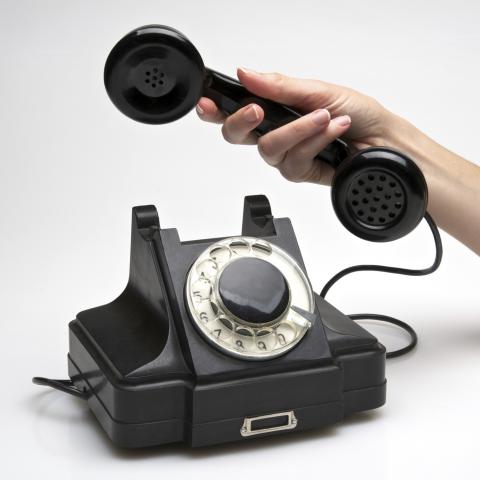Numbers are essential in our daily lives—whether we use them to express time, negotiate prices, record dates, or count. Learning Cantonese numbers will definitely help you navigate Canto-speaking cities better, and that’s what our Cantonese lessons about numbers hope to achieve. So let CantoneseClass101 guide you through the world of Cantonese numbers.
Below are different categories of Cantonese numbers and relevant phrases, including the basic Cantonese numbers 1-10. Are you ready to learn Cantonese numbers and practice these Cantonese numbers in English?
Table of Contents
- Cantonese Numbers 0-9
- Cantonese Numbers 10-100
- Cantonese Numbers up to 1000
- How to Give Your Phone Number
- Shopping: How to Use Numbers when Shopping
- Bonus: Refresh Your Memory with a Cantopop Song
- Conclusion: How CantoneseClass101 Can Help You Learn More Cantonese
1. Cantonese Numbers 0-9
You can use both digits or Cantonese characters to express numbers. For example, if you want to express “zero,” you can either use 0 or 零 (ling4). Also, as you can see below, when it comes to Cantonese numbers, tones are still important.
- 0: 零 (ling4)
- 1: 一 (jat1)
- 2: 二 (ji6)
- 3: 三 (saam1)
- 4: 四 (sei3)
- 5: 五 (ng5)
- 6: 六 (luk6)
- 7: 七 (cat1)
- 8: 八 (baat3)
- 9: 九 (gau2)
You can check out our website to learn the pronunciation of these Cantonese numbers (Cantonese numbers 1-10 pronunciation).
2. Cantonese Numbers 10-100
十 (sap6) is equivalent to “ten” in English. If you want to express twenty, thirty, and so on, just add the Cantonese equivalent of the first digit in front of 十 (sap6).
Take twenty for example:
Twenty is “20,” and the Cantonese equivalent of the first digit “2” is 二 (ji6). Adding 二 (ji6) in front of 十 (sap6), we have 二十 (ji6 sap6) for “twenty.”
When the number reaches one-hundred, 十 (sap6) turns to 百 (baak3), and we have 一百 (jat1 baak3) for “100.”
- 10: 十 (sap6)
- 20: 二十 (ji6 sap6)
- 30: 三十 (saam1 sap6)
- 40: 四十 (sei3 sap6)
- 50: 五十 (ng5 sap6)
- 60: 六十 (luk6 sap6)
- 70: 七十 (cat1 sap6)
- 80: 八十 (baat3 sap6)
- 90: 九十 (gau2 sap6)
- 100: 一百 (jat1 baak3)
Expressing eleven, twelve, thirteen, all the way up to ninety-eight and ninety-nine in Cantonese is easy and similar to English.
For example, if you want to express “twenty-one,” you only need to combine “20” (二十 [ji6 sap6]) and “1” (一 [jat1]), and you have 二十一 (ji6 sap6 jat1) in Cantonese.
The same rule applies for Cantonese numbers 11 to 99. If you want to express “eleven,” you can combine “10” (十 [sap6]) and “1” (一 [jat1]), and you’ll get 十一 (sap6 jat1).
- 11: 十一 (sap6 jat1)
- 22: 二十二 (ji6 sap6 ji6)
- 33: 三十三 (saam1 sap6 saam1)
- 44: 四十四 (sei3 sap6 sei3)
- 55: 五十五 (ng5 sap6 ng5)
- 66: 六十六 (luk6 sap6 luk6)
- 77: 七十七 (cat1 sap6 cat1)
- 88: 八十八 (baat3 sap6 baat3)
- 99: 九十九 (gau2 sap6 gau2)
Once again, you can check out our website to learn the Cantonese numbers’ pronunciation.
3. Cantonese Numbers up to 1000
Now that we’ve basically covered numbers in Cantonese 1-100, it’s time to count even higher!
百 (baak3) is equivalent to “hundred” in English. If you want to express “two-hundred,” “three-hundred,” and so on, just add the Cantonese equivalent of the first digit in front of 百 (baak3).
Take “two-hundred” for example:
“Two-hundred” is “200,” and the Cantonese equivalent of the first digit “2” is 二 (ji6). Adding 二 (ji6) in front of 百 (baak3), we have 二百 (ji6 baak3) for “two-hundred.”
When the number reaches a thousand, 百 (baak3) turns to 千 (cin1), and we have 一千 (jat1 cin1) for “1000.”
Counting by hundreds, here are Cantonese numbers from 200-1000:
- 200: 二百 (ji6 baak3)
- 300: 三百 (saam1 baak3)
- 400: 四百 (sei3 baak3)
- 500: 五百 (ng5 baak3)
- 600: 六百 (luk6 baak3)
- 700: 七百 (cat1 baak3)
- 800: 八百 (baat3 baak3)
- 900: 九百 (gau2 baak3)
- 1000: 一千 (jat1 cin1)
Again, expressing “one-hundred and one” up to “nine-hundred and ninety-nine” in Cantonese is simple and similar to English.
For example, if you want to express “one-hundred and twenty-one,” you just need to combine “100” (一百 [jat1 baak3]) and “21” (二十一 [ji6 sap6 jat1]), and you have 一百二十一 (jat1 baak3 ji6 sap6 jat1) in Cantonese.
Note that if the second digit of a three-digit number is “0,” we need to add 零 (ling4) in the middle.
Take “207” as an example. In addition to “200” (二百 [ji6 baak3]) and “7” (七 [cat1]), we also need to include “0” (零 [ling4]) in the middle. Hence, “207” is 二百零七 (ji6 baak3 ling4 cat1).
Here are some more examples of triple-digit Cantonese numbers:
- 108: 一百零八 (jat1 baak3 ling4 baat3)
- 166: 一百六十六 (jat1 baak3 luk6 sap6 luk6)
- 230: 二百三十 (ji6 baak3 saam1 sap6)
- 344: 三百四十四 (saam1 baak3 sei3 sap6 sei3)
- 456: 四百五十六 (sei3 baak3 ng5 sap6 luk6)
- 550: 五百五十 (ng5 baak3 ng5 sap6)
- 612: 六百一十二 (luk6 baak3 jat1 sap6 ji6)
- 722: 七百二十二 (cat1 baak3 ji6 sap6 ji6)
- 805: 八百零五 (baat3 baak3 ling4 ng5)
- 910: 九百一十 (gau2 baak3 jat1 sap6)
4. How to Give Your Phone Number
If you want to ask for someone’s phone number, you can say: 可唔可以比你個電話我呀 (ho2 m4 ho2 ji5 bei2 nei5 go3 din6 waa2 ngo5 aa3), meaning “Could you please give your phone number to me?”
To give your number to someone else, you can simply say the digits of your number in Cantonese. If your number is 91234567, you can say 九一二三四五六七 (gau2 jat1 ji6 saam1 sei3 ng5 luk6 cat1).
A typical Hong Kong phone number has eight digits. Mobile numbers usually start with 5, 6, or 9, and fixed landline numbers start with 2 or 3. Hong Kong’s country code is 852, and we don’t have an area code.
Numbers that aren’t eight digits are usually reserved for carrier/operator services or special services, such as 999 (gau2 gau2 gau2) for emergency services.
5. Shopping: How to Use Numbers when Shopping
Now, here are some useful phrases for an activity that you may not be able to resist, especially when you’re in Hong Kong: Shopping!
It’s easy to express prices in Hong Kong. You just have to say the number directly in Cantonese and add the word 蚊 (man1) to the end. For example:
- $3 is 三蚊 (saam1 man1)
- $18 is 十八蚊 (sap6 baat3 man1)
- $100 is 一百蚊 (jat1 baak3 man1)
- $612 is 六百一十二蚊 (luk6 baak3 jat1 sap6 ji6 man1)
- $1000 is 一千蚊 (ljat1 cin1 man1)
You can use the below phrases to inquire about the price of something:
- 呢個幾錢?
- Romanization: ni1 go3 gei2 cin2
- Translation: How much is this?
- 嗰個幾錢?
- Romanization: go2 go3 gei2 cin2
- Translation: How much is that?
You can use the below phrases to bargain for lower prices:
- 平啲啦!
- Romanization: peng4 di1 laa1!
- Translation: Cheaper please!
- 可唔可以平啲呀?
- Romanization: ho2 m4 ho2 ji5 peng4 di1 aa1?
- Translation: Can you lower the price?
- 太貴喇!
- Romanization: taai3 gwai3 laa3!
- Translation: It’s too expensive!
- 我唔買喇.
- Romanization: ngo5 m4 maai3 laa3.
- Translation: I’m not buying it.
To practice the above phrases, especially the ones for bargaining prices, you can visit 女人街 (neoi3 jan2 gaai1). 女人街 (neoi3 jan2 gaai1) literally translates as “ladies market,” and is one of the most popular Hong Kong street markets and tourist destinations.
Even though it’s called the “ladies market,” the market actually sells everything, including the latest fashion for men and women, electronics, records, and even dairy products.
6. Bonus: Refresh Your Memory with a Cantopop Song
Need some help refreshing your memory of Cantonese numbers? No worries. We’ve got you covered.
In case our vocabulary list isn’t enough, you can also check out this Cantopop song sung by the veteran Cantopop singer George Lam. The name of the song is 數字人生 (sou3 zi6 jan4 saang1), meaning “A Number of Life.” As the name of the song suggests, it’s about numbers.
In fact, most of its lyrics are numbers that appear to be random and don’t make sense. Though it was released two decades ago, the “number song” is still well-known among Hongkongers. The government even decided to use it for promoting the 2012-2013 Budget Consultation.
7. Conclusion: How CantoneseClass101 Can Help You Learn More Cantonese
We hope you now see how important Cantonese numbers in language learning are! With basic Cantonese numbers, you can now exchange phone numbers and enjoy shopping in Hong Kong!
Now that you’ve mastered Cantonese numbers, it’s time to move up to the next level! With CantoneseClass101.com, you can have your daily dose of Cantonese whenever and wherever you want, through our mobile apps, desktop software, and website. We offer entertaining, engaging, and effective lessons on various aspects of the Cantonese language and culture.
Until now, we’ve delivered more than 750,000,000 lessons to thousands of happy students from all around the globe. You can learn Cantonese with over 1060 audio and video lessons, delivered by our knowledgeable and energetic hosts. We also have detailed PDF lesson notes, an abundance of vocabulary learning tools, spaced repetition flashcards, and a lively community to discuss the lessons with fellow learners. What are you waiting for? Download our lessons, enjoy our audio and video files, and start learning now!
















